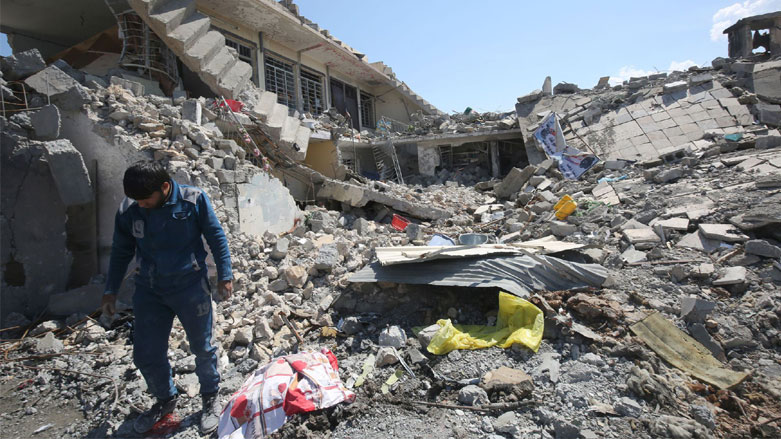Secondary explosion from Mosul strike killed 105 civilians: Pentagon Report

ERBIL, Kurdistan Region (Kurdistan24) – The Pentagon on Thursday released a much-anticipated report on the March 17 airstrike against the Islamic State (IS) which killed over 100 civilians in Mosul.
“US personnel could not have predicted that dozens of Mosul residents would be in a building where IS snipers were firing when they authorize a strike on it,” the Pentagon said in the report.
The investigation also determined that IS militants deliberately planted explosives in the targeted building to cause a secondary explosion and harm civilians.
The investigators found “residues of explosives commonly used by IS,” including nitroglycerin which was “likely used to sensitize the secondary explosive devices to detonate more easily.”
Out of the 105 civilians killed, 101 were in the building that was bombed. 36 people remained unaccounted for.
"Our condolences go out to all those that were affected," said Maj. Gen. Joe Martin, commanding general of the ground force fighting IS. "The Coalition takes every feasible measure to protect civilians from harm. The best way to protect civilians is to defeat ISIS."
The report believes civilians were seeking refuge in the structure, which was considered one of the sturdiest buildings in the area.
It wasn’t until after the strike that US Central Command learned civilians were in the building.
“The coalition takes responsibility for the strike,” Air Force Brig. Gen. Matthew Isler said.
The civilians who died in the strike had been forced out of their houses by IS fighters in the Jadida neighborhood during clashes between the militants and Iraqi Forces in western Mosul. The report also mentions that a next-door neighbor told investigators he had been warned to evacuate his family ahead of the airstrike.
Iraqi Forces with the support of the US have liberated more than 90 per cent of Mosul. However, it is estimated that over approximately 200,000 people still live in the IS-held area with scarce access to food and clean water.
There are additional concerns about the rising risk of civilian casualties as the Iraqi Army is expected to make a push for the Old City before the end of June.
